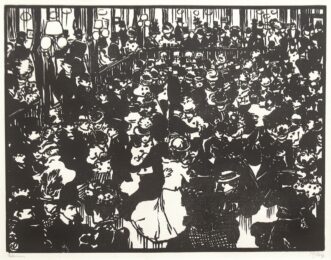

1877-1943
Founder in 1923 of the Société des Peintres Graveurs Indépendants, friend to avant-garde poet Guillaume Apollinaire and painter Marie Laurencin, the artist Jean-Émile Laboureur found inspiration in sources ranging from Hellenistic vase painting to Nabis artists such as Bonnard, Vuillard and Vallotton.
Laboureur was born in Nantes, France in 1877. He arrived in Paris in 1895 to study at the Faculty of Law. Quickly dissatisfied in that pursuit, he began to frequent the Academie Julian, a prestigious Parisian art academy. Laboureur was soon introduced to the eminent wood engraver Auguste Lepère, and decided to devote himself to the study of printmaking. While Lepère imparted technical expertise, artists like Toulouse-Lautrec, with whom Laboureur became acquainted in 1896, encouraged his sense of humor and irony, bringing a cosmopolitan flair to his work.
Between 1899 and 1910, Laboureur traveled extensively. He cultivated a broad historical knowledge of engraving in Germany and Italy. In Greece, he was greatly inspired by the elegance of Classical vase painting. He returned to Paris in 1910, as Picasso and Braque were ushering in Cubism. Building on this analytical, geometric style with the knowledge and inspiration acquired during his travels, Laboureur developed a decorative style distinctly his own.
By the end of World War I, Laboureur had gained a new audience with his success in book design and illustration. His service in the war had led him to experiment with engraving on metal, which required neither the acid baths of etching nor the bulky equipment of wood engraving. Gradually his style became more fluid, moving away from the rigid properties of Cubism.
Displaying what contemporary poet and friend Max Jacob described as “chic” and “grand classical elegance,” Laboureur was widely collected by Americans as well as Europeans.